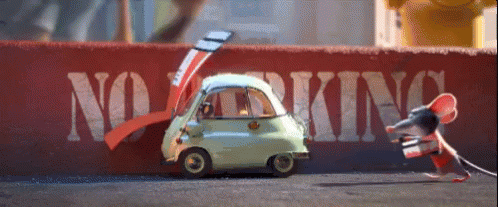| What Google Street View Can Say About the Quality of Life in Your Neighborhood |
| By Gary M. Feinman In a remarkable new study, the broad-brush patterns between how we use and mark public space and our collective well-being were investigated in 2022 by Quynh C. Yue and colleagues who analyzed 164 million Google Street View images from locations across the United States. The study extracted information on the built environment with a focus on the directionality of traffic, the incidence of crosswalks and sidewalks, and the presence or absence of street signs, which foster way-finding. The information collected on the built environment was then compared with census-tract, health information for those neighborhoods that were included in the Google Street Views. The researchers found that legible, accessible paths that eased movement and communication had positive health impacts. Traffic restrictions, like an abundance of single-lane roads, indicative of lower levels of urban connectivity, were correlated with chronic health conditions and lower levels of mental health. Walkability indicators such as crosswalks and sidewalks were associated with better health, including reductions in depression, obesity, high blood pressure, and high cholesterol. Street signs and streetlights were also found to be associated with decreased chronic conditions. Overall, living in neighborhoods with a built environment that supports social interaction and physical activity leads to positive health outcomes. But what factors or social mechanisms underpin these correlations? For this contemporary study, that question is not easy to answer as we neither can pinpoint the history of town/urban planning for each street view, nor do we know the governmental or individual decisions and actions that created each different community-scape. Here, turning to archives of history and ground plans of past cities may hold some clues. Humans interact, cooperate, and form social configurations at many different scales with the sizes of our social networks highly variable. Many of us are part of household units. Members of different households often join forces or get together to form sports teams, or block associations, or work groups. Some of us live in small communities, others live in neighborhoods of variable extents, and most of us are affiliated with metropolitan areas or cities, states, nations, along professional associations, and market networks. In general, human affiliations and groupings have systems of governance that encompass the rules of the game, the norms, institutions, and modes of leadership. For humans, past and present, institutions and governance to a degree set the different parameters in which we live, work, cooperate, and interact. Archaeologists faced with the challenge of defining the nature of, as well as variation and change in, governance over time rely on the material remains and residues of past human behaviors and actions to extract clues about politics in the past. Monumental architecture, statues of rulers, written texts, material symbols of office or the markers of royal position all can provide essential glimpses of individual aggrandizement, the personalization of clout, or alternative political forms in which power was more shared and distributed. But of late, archaeologists also have begun to examine the spatial layouts and allocations that are visible through the plans of ancient cities, arrangements of urban architectural components, and other indicators of socio-spatial behaviors to compare the variation in governance across human institutions. In their writings, which draw on a comparative, quantitative study of 30 premodern states and empires from across the globe, Richard Blanton and Lane Fargher have made a strong case that legible and open urban plans that afford widespread access to services and power tend to be associated with more collective, less autocratic forms of governance. Urban forms, like grid systems that facilitate way-finding, allow travel and access to be more open and equal. Broad public spaces afford opportunities for the exchange of both information and material. Blanton and Fargher opine that less transparent, less efficient uses of space tend to degrade participation, voice, and economic efficacy, thereby underpinning and indicating less equal political relations and consolidations of power. Blanton and Fargher also link variation in governance to degrees of inequality with more collective political forms fostering broader well-being and economic equity, while more autocratic regimes tend to associate with higher amounts of inequality and more disparate outcomes in regard to health and well-being. In large part, these differences correlate with the greater provisioning of public goods and services by more collective governments, which contribute to biological, material, and emotional well-being. Additionally, more autocratic regimes were found to be more prone to social disruptions and unrest, which degrade well-being. Blanton and Fargher find statistical support for these relations in their sample. Their findings, in conjunction with recent studies in other historical regions, provide strong cross-cultural indications that governance, construction and uses of social space, and well-being are all behaviorally linked. While caution is in order, the findings from the Google Street Map study do show clearly that socio-spatial arrangements have clear and direct impacts on human health and well-being, and that the built environments that we collectively construct can signal broader values and differences in governance. In a specific recent example in the news, the shift toward autocracy in Turkey coincides with restrictions in public access to what was the largest civic space in the nation’s biggest metropolis. Human cooperation and the institutions through which we implement it take different forms. These social ties and arrangements leave discreet on-the-ground signatures. How closely do these urban signatures and patterns correspond with equity, well-being, health, and sustainability? And, how much can we learn by examining these relationships in the past? The next era of archaeological research, aiming to document the relationship between shifts in governance and changes in urban layouts and access, should provide us with important answers. Gary M. Feinman is a MacArthur Curator of Anthropology at the Field Museum of Natural History in Chicago, Illinois. For media outlets interested in publishing IMI articles like these, please send us an email: info@ind.media. |

No comments:
Post a Comment